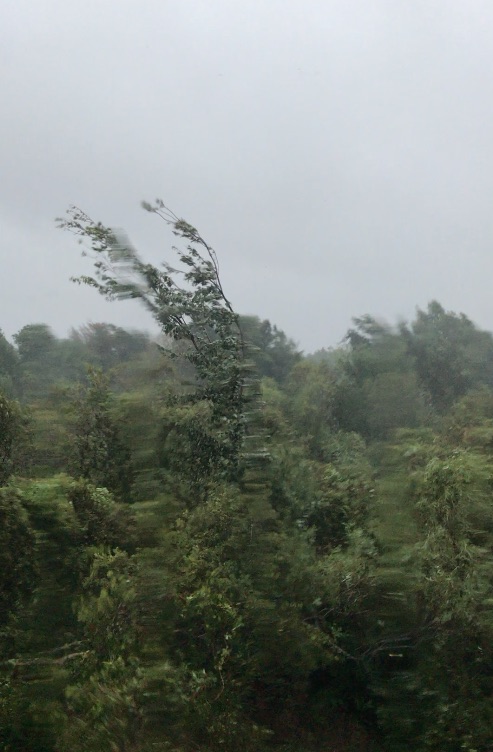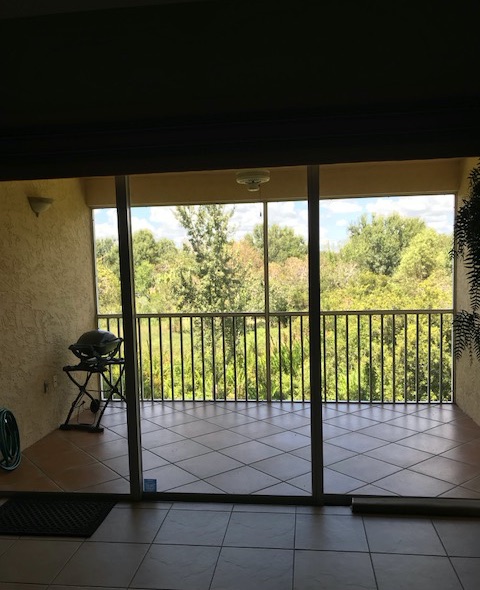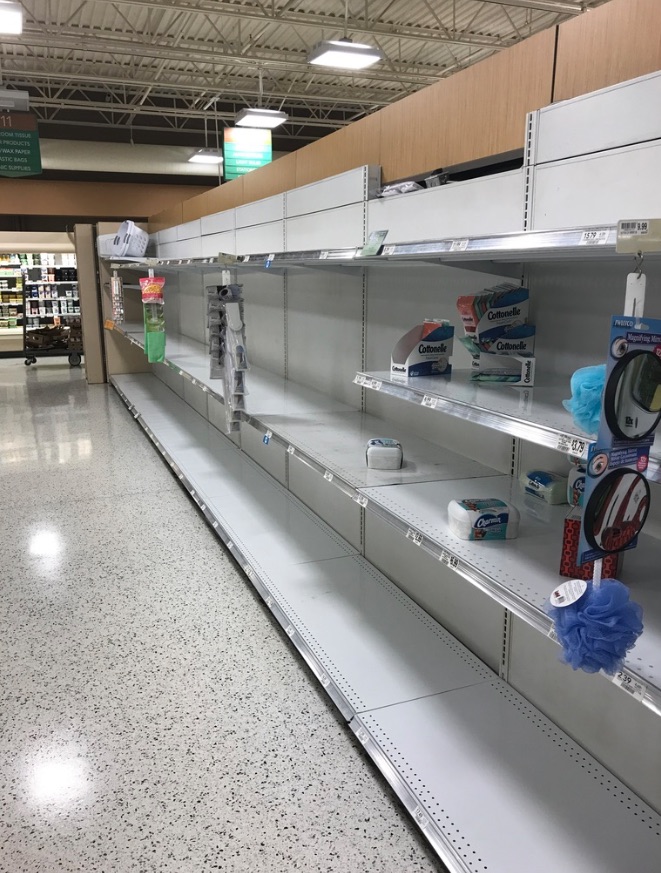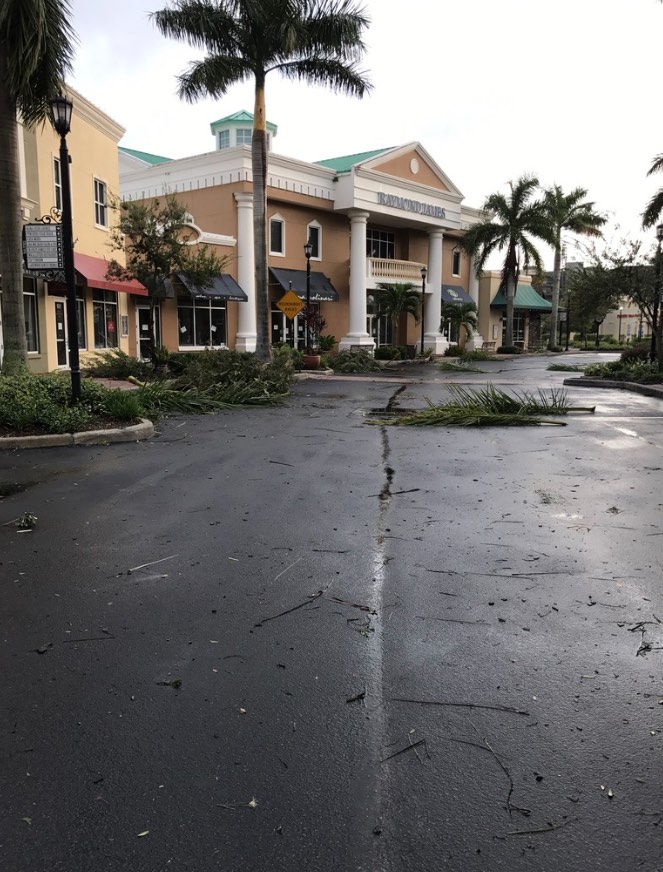Hurricane Woes - Lessons From Hurricane Irma
 #MyBrokenSupplyChain – Commentary to reflect on issues facing all of us with an eye to the quality, effectiveness, and adequacy of the supply chain. The author was in the last major hurricane in Florida and did not enjoy it.
#MyBrokenSupplyChain – Commentary to reflect on issues facing all of us with an eye to the quality, effectiveness, and adequacy of the supply chain. The author was in the last major hurricane in Florida and did not enjoy it.
Sixteen separate weather events, including three major hurricanes, hit the United States in 2017 causing over $300 billion in damages. In Florida, where I reside, Irma made landfall first as a Category 4 hurricane, then again in the Gulf Coast as a Cat 3, causing $50 billion in property damage. The “Supply Chain” began breaking down more than a week before the hurricane arrived. (I think it is reasonable for a consumer to expect to find basic necessities at a supermarket or gas station on any given day. )
A brief chronology starting a week before Irma arrived.
-7 days Hurricane Day minus 7 (seven days before the hurricane) – We know that a hurricane is on the way - or we should know. The Weather Channel (TWC) has been showing a growing disturbance in the Atlantic for almost a week. I happen to be on a short vacation enjoying the Atlantic Ocean, but keeping an eye on the Weather Channel because it is the height of hurricane season. While enjoying my last day of vacation, I see that there is now a significant storm that is very likely to hit Florida. I certainly want to be prepared. I already have 15 days worth of water at my home, but I want more. History has shown that bad storms can leave us without power and services for months. I get ready to end my vacation and am thinking about preparing my home for the storm.
-6 days – I am driving 165 miles to my home across Florida on SR-70, a straight two-lane road with a small town about every thirty miles. I get to the middle of the state and both gas stations there have a waiting line. I have a half tank, enough to get home, but I wait on line to get gas, not wanting to risk getting home to find stations sold out. The gas station convenience store is ALREADY sold out of bottled water. They only stock about 15 one-gallon-size bottles and a bunch of liter-size bottles. But it's all gone and so are many of the sports drinks - all the good flavors sold first of course.
I get my gas and drive another 40 miles toward home and stop at the Walmart in Arcadia. It too is out of bottled water, and so is the Publix supermarket. Customers in Walmart are not happy. Rolling on, I get home an hour later and see cars in line at the local gas stations. People are mobbing the local Publix is trying to get food and drinks.
-5 days – I begin preparing my house for the storm. I turn my ice maker on. I will need the ice to keep food chilled if we lose power (see note on beer below). In my 2nd floor condo I don’t worry about ground water flooding my unit. I take stock of what I have to eat and what I can cook if the power goes out. I have a grill, but it is electric, and won’t work if the storm knocks the power out, which is likely. I have a propane camping stove in the garage, so I take that apart, clean it and test it. Fortunately, it is in good working condition and I have five small bottles of propane. I also clean my Boy Scout mess kit in case I need to cook with it. I take all items in from the lanai (a screen-covered patio) – table, chairs, decorative stuff. Everything has to come off it.
 |
|
Everything has to come in from the lanai before the storm. Even fan blades were removed. The wind doesn't bother me until the three doors start flexing with each gust, at which point I retreated to the safety of a closet. |
Anything left there could become a projectile and come flying through the three sliding glass doors which stretch 12 feet across (see pic). Those sliding doors were installed in 2001 and are not up to the latest hurricane building code.
-4 days – Water deliveries to the supermarket are made early in the morning but are gone by 9 am. Gas stations are running out of gas, but if you cruise around for an hour, you can find a station that has some gas, but only regular unleaded. Premium and mid-grade unleaded are sold out everywhere.
Plastic gas containers are sold out too. I visit Home Depot to see what is going on there and to get some duct tape and plastic to cover any windows that might break during the storm. Generators are sold out. The average price of a generator is about $900, according to the salesperson. More are due tomorrow, maybe. My TV on and tuned to the weather channel all the time.
-3 days People are fleeing Florida. Highways are bumper to bumper for over 100 miles heading northbound out of Florida. Southbound highways are empty. Northbound traffic eases at night. Gas station outages are more severe.
Water is not available. People are buying all they can and are waiting in line at Publix and Walmart for deliveries of water. Publix rations water bottles. People have learned from past hurricanes that there could be no power and no clean water for weeks or months. Clearly however they have not learned to inventory their own water in hurricane season. I have a Brita at home, but I buy an additional water filter-type container and filter tap water and fill up some empty water jugs. Filtered tap water does not taste good. The water supply in my town is abysmal year-round. I also fill up my bathtub, so I have water to use to flush the toilet if the town is unable to pump water.
I clean my garage and get everything I value at least three feet off the floor. My Lionel train set is moved way up high - five feet off the floor. My toolbox is only a few inches off the floor and too heavy to move, but I seal it up tight and say a silent prayer. I prepare sandbags using plastic garbage bags and potting soil for my garage doors, which I end up using as I check the garage during the storm and discover there is a leak under the door frame. The sandbags stop the water from blowing under the frame.
-2 days – Traffic northbound on I-75 creeps bumper to bumper day and night. There is no gasoline for sale along Interstate 75; you must get off at an exit to find it. So congestion and confusion ensue at every exit. And there is no gas unless you are very lucky.
 No bottled water is available anywhere. Every sports drink, seltzer, flavored water drink, juice box and coconut water drink is sold out. Shelves of staples are empty. Soups, crackers, etc. are all gone. Paper towels too! It will take a full month after the hurricane for the shelves at stores to be back to normal.
No bottled water is available anywhere. Every sports drink, seltzer, flavored water drink, juice box and coconut water drink is sold out. Shelves of staples are empty. Soups, crackers, etc. are all gone. Paper towels too! It will take a full month after the hurricane for the shelves at stores to be back to normal.
-1 day – No gas, no water, no Starbucks. Starbucks and Publix have closed to let their employees get ready. The hurricane has already struck the Keys, and we are all nervous. It is a category four storm.
I remove the last of the furniture from my lanai, take the fan blades off the patio fan, and bring everything including my outdoor grill into my living room.
I take all the pictures and paintings off the living room and dining room walls and put them in a closet, at least two feet off the ground. If your home is breached by debris, like a window cracking from a stick, and water penetrates, you can have water flying horizontally in your home, and everything gets wet.
I take my small propane camping grill from the garage and bring it inside, but leave the propane cylinders in the garage. Safety first!
Zero day - Hurricane day – Most people have left town if they could get out. Ready, but bored, I decide to make a pot of chili. It is easy to re-heat on a propane stove. I use a bottle of beer for liquid instead of water (old habit). I then realize that I now have one fewer beers than planned. I decide I do not have enough beer as the storm is still a category 4 and we could be without beer deliveries for a long time. I drive 2.5 miles to the convenience store that is still open. They have no water, but they do have beer. I buy a six-pack paying about $2 more than usual. The chili turns out great, and I eat it for one meal a day for four days.
Hurricane Irma strikes in the early evening. The hurricane, which has already creamed the Florida Keys, slams us with a vengeance. The power goes out intermittently and comes back on. Repeat, repeat, repeat. By 9 pm, the winds tear through the preserve and golf course behind my condo viciously, certainly over 100 mph. Trees are being whipped back and forth. My condo is about 7 miles inland from the beaches of Sarasota and Long Boat Key so I am spared the full intensity that waterfront folks get. By 9:30 pm the storm is nearly on top of us and the triple sliding doors to my lanai are flexing in the middle with the wind gusts. They were made when the condo was built in 2001, and are not as strong as the doors made today. Watching them flex in against the frames scares me enough that I leave the living room and hunker down in a walk-in closet (aka “safe room”) with my flashlight. It is not yet the peak of the storm and I am quite nervous about those doors blowing in.
By 12 midnight the storm is weakening, and the worst is over. I am very relieved. So far it has passed without incident for me.
+1 day - Hurricane plus 1 - The next day I find out that 90% of the five million customers of my local power company have lost power. I am in the lucky ten percent. My utilities run underground instead of on the pole, and that probably helped. 
I also have cell service, although not at full strength - at least one local cell tower is out of commission. I go outside and clear the drains in my condo development; all are clogged with leaf debris. We did not get as much rain as planned, perhaps 4 inches compared to the 8 to 12 inches expected. This is fortunate, as the storm drains are filled to the brim, a few more inches of water would have flooded the area.
I drive around, curious to observe the damage. The streets are mostly clear but branches are strewn across the roads and plenty of trees are down. I drive to an area that is prone to flooding from storm surges, the creek that connects to the Manatee river is full, but not overflowing. The storm veered at the last minute, avoiding us by about 20 miles and minimizing the storm surge that follows. I live on the west coast of Florida, so the surge comes *after* the storm as the winds behind the eye will sweep from west to east. Before the storm the water was pushed out of the local beaches and bays by the wind, almost tsunami-like, so there was concern about what the back half of the storm would bring. Ultimately we were spared from the worst. Parts of this area remained without power for up to two weeks. I begin putting my house back the way it normally is - patio furniture and grill go back on the lanai and things start to go back to normal. Starbucks will not reopen for another 48 hours.
——
What lessons did mother nature offer us?
A. There was not enough inventory in the supply chain for bottled water, gasoline, generators, plywood or other hurricane prep essentials.
B. The concept of just-in-time inventory management should not be used to prepare for storm season. Since hurricane season comes annually and lasts for six months, it is reasonable for consumers to expect vendors to carry more inventory.
What retailers and distributors need to consider when planning inventory levels - and why inventory levels should be much higher.
1) the population of my area is growing by leaps and bounds – tens of thousands of homes are being built, so that will drive demand up annually.
2) Planners cannot use last years sales numbers to make firm projections because they ran out of inventory so quickly. If last years sales were 700,000 cases of water in September, but items were out of stock by 9am every day, you cannot base your estimates on those 700,000 cases. You could probably have sold five times that number if you could have delivered it to your stores.
3) The cost of carrying inventory is as cheap as it ever was. Historically over the last forty years inventory carrying costs have been much higher due to high costs of debt – but interest rates have been at rock bottom for a decade – so make sure your calculations reflect that. Many companies are trying to squeeze capital out of the supply chain, and to a certain extent they should, but at the same time, a single product outage means a consumer like me will just whip out his phone and order from Amazon. Having the right product in stock when needed is about the only advantage a retailer has over Amazon. I will never return to a store to buy something if it is out of stock - why would I? Click, click, click and it is on my doorstep in two to four days.
4) Almost none of the critical items are perishable. Bottled water and drinks, gasoline, plywood – all have a long shelf life, so if you over-order, the merchandise will last long enough to sell it off.
5) Hurricane season lasts six months and peaks in September – every single year. It’s simple to remember. If we can figure out how to get enough toys on the shelf at Christmas, we can plan for hurricane season too.
Who performed well? I have to give a lot of credit to Florida Power and Light (FPL). They recruited thousands of technicians from all over the country and had them here in advance of the storm, and they aggressively repaired outages 24/7. They knew what they would be facing and were ahead of the curve. They had crews everywhere even during the storm. Nice!
The bottom line – all the players in the supply chain need to carry more inventory and be better prepared.
By Craig L. Aberle

Craig Aberle is the owner and publisher of The Bar Code News, https://www.barcode.com. He was the founder and CEO of MicroBiz Corp from 1986 to 2000, a leading developer of point-of-sale software and three time Inc 500 winner. He has an undergraduate degree from SUNY Buffalo and an MBA from The Wharton School. He has served as a volunteer for SCORE mentoring small business owners and also the Boy Scouts. He is an author of - "How To Computerize Your Small Business." (Wiley and Sons NY), has given over 100 seminars on “The Benefits of Automation and is an avid skier and cyclist.
Sources:
https://coast.noaa.gov/states/fast-facts/hurricane-costs.html
https://abcnews.go.com/US/hurricane-andrew-25-years-monster-storm-devastated-south/story?id=49389188
https://www.cnn.com/2017/05/15/us/2017-atlantic-hurricane-season-fast-facts/index.html
